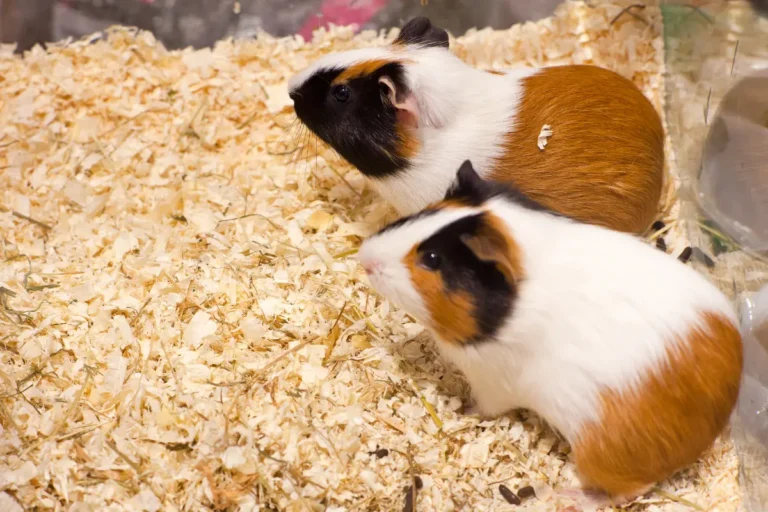Why Is My Hamster Shaking? Common Reasons and How to Help
A shaking hamster can be a concerning sight for any pet owner. While hamsters are generally hardy animals, they can experience shaking for various reasons, ranging from mild environmental discomfort to serious health issues.
1. Cold or Chilly Environment
Hamsters are sensitive to temperature changes and may begin to shake if they’re too cold. They generally prefer an environment between 65°F and 75°F (18°C–24°C). If the temperature drops too low, your hamster’s body will try to generate heat by shivering or shaking, much like humans do.
How to Help
- Check the Cage Location: Make sure your hamster’s cage is located in a room with a stable, warm temperature, away from drafts, windows, or air conditioning vents.
- Provide Extra Bedding: Add more soft, insulating bedding material, such as shredded paper or aspen shavings, to allow your hamster to burrow and retain heat.
- Use a Heating Pad (if needed): Place a low-wattage heating pad beneath one side of the cage (never inside) to provide a gentle heat source, allowing your hamster to move away if they feel too warm.
2. Fear or Stress
Hamsters are small prey animals and can be easily frightened by sudden noises, unfamiliar people, or abrupt movements. Shaking due to fear or stress is common and may be accompanied by signs such as wide eyes, freezing in place, or even squeaking.
How to Help
- Minimize Loud Noises and Sudden Movements: Keep their environment calm, especially during interactions, and avoid sudden noises or actions that could startle them.
- Create a Safe Space: Ensure your hamster’s cage has plenty of hideouts where they can retreat and feel safe. These hiding spots help reduce stress and give them a secure place to calm down.
- Build Trust Gradually: If your hamster is new or not yet comfortable with you, build trust by spending time near the cage, speaking softly, and gradually introducing your hand with treats.
3. Sickness or Health Problems
Shaking can be a symptom of various health conditions in hamsters, including respiratory infections, kidney disease, and neurological issues. In these cases, shaking may be accompanied by other symptoms such as lethargy, weight loss, difficulty breathing, or lack of appetite.
How to Help
- Monitor for Additional Symptoms: Observe your hamster for other signs of illness, such as changes in appetite, weight, and activity level. Check for discharge from the nose or eyes, which could indicate a respiratory infection.
- Contact a Veterinarian: If you suspect illness, it’s crucial to consult a vet as soon as possible. A veterinarian can diagnose the issue and recommend appropriate treatment, including antibiotics or supportive care.
- Provide a Warm, Calm Environment: During recovery, keep your hamster warm, and minimize stress to help them conserve energy and promote healing.
4. Hypothermia
If exposed to extremely cold temperatures, hamsters may experience hypothermia, a condition where their body temperature drops to dangerous levels. This can cause severe shivering and weakness, and in advanced cases, can be life-threatening.
How to Help
- Warm Up the Cage Gradually: Slowly increase the temperature in your hamster’s environment using a low-wattage heating pad beneath the cage or by moving the cage to a warmer room.
- Offer Warm Bedding: Provide additional bedding, such as soft paper bedding or fleece, to help retain body heat.
- Avoid Direct Heat Sources: Never use direct heat, like a hairdryer or hot water bottle, as it can cause burns or shock your hamster’s system. Always ensure they have the option to move away from any heat source.

5. Pain or Injury
Pain or injury can lead to shaking in hamsters. If they’ve had a fall, been handled too roughly, or sustained an injury, they may shake due to pain or trauma. Look for signs like limping, swelling, or reluctance to move, as these can indicate a physical injury.
How to Help
- Handle with Care: If you suspect injury, avoid excessive handling and allow your hamster to rest. Gently inspect them for any visible injuries, but be cautious, as they may be more sensitive and defensive.
- Provide a Soft, Quiet Space: Remove any sharp or hard objects from their cage to avoid further injury, and make sure they have a soft area to rest.
- Seek Veterinary Care: If you notice visible injuries or signs of pain, consult a veterinarian. Pain management and possible treatments can help prevent further complications.
6. Hypoglycemia (Low Blood Sugar)
Hamsters, especially those who are young, small, or sick, can be prone to hypoglycemia (low blood sugar), which can lead to shaking, weakness, and even fainting. Hypoglycemia can result from inadequate food intake, excessive exercise, or stress.
How to Help
- Provide Immediate Food: Offer a small piece of a sugar-rich treat like a tiny bit of banana or an apple slice to help boost their blood sugar quickly.
- Ensure Consistent Feeding: Make sure your hamster has access to food throughout the day and night. Scatter feeding can encourage natural foraging behavior and reduce the risk of missed meals.
- Monitor for Recurrence: If hypoglycemia is a recurring issue, consult a vet to discuss dietary adjustments or possible underlying conditions.
7. Hibernation or Torpor
If temperatures drop significantly, some hamsters may enter a state known as torpor, a lighter form of hibernation, to conserve energy. In torpor, a hamster’s body temperature drops, and they may shake as their body slows down. Torpor is more common in Syrian hamsters, while dwarf hamsters are less likely to experience it.
How to Help
- Warm Up the Environment Gradually: Raise the room temperature slowly back to the recommended range (65°F–75°F or 18°C–24°C). This will help your hamster gradually return to its normal state.
- Monitor Their Condition: Observe for signs of responsiveness. If your hamster doesn’t wake up after being warmed, consult a veterinarian, as prolonged torpor can lead to health complications.
- Prevent Future Occurrences: Ensure a stable, warm environment to avoid triggering hibernation in the future, especially during colder seasons.
8. Neurological Issues
In rare cases, neurological disorders or conditions such as strokes can cause a hamster to shake uncontrollably. These conditions may also lead to other symptoms, such as head tilting, seizures, or lack of coordination.
How to Help
- Limit Stimulation: Minimize stress and stimulation to help keep your hamster calm and comfortable.
- Consult a Veterinarian: Neurological issues often require professional diagnosis and treatment. If your hamster has any unusual or repetitive shaking, a vet can provide guidance on supportive care or possible treatments.
- Provide a Safe Environment: Remove obstacles and provide soft bedding to prevent injuries if your hamster has episodes of shaking or seizures.
When to Seek Veterinary Assistance
If your hamster’s shaking is accompanied by any of the following symptoms, it’s best to seek veterinary care immediately:
- Persistent or severe shaking that doesn’t resolve with environmental adjustments
- Labored breathing, discharge from the eyes or nose, or sneezing
- Significant changes in appetite or weight
- Inability to move or signs of paralysis
- Visible injuries, pain, or bleeding
Prompt veterinary attention can help diagnose and treat any underlying health issues, improving your hamster’s chances of a swift recovery.
Summary: Key Steps to Help a Shaking Hamster
- Check the Temperature: Ensure their environment is within the comfortable range of 65°F–75°F (18°C–24°C).
- Provide Comfort and Safety: Offer additional bedding, remove stressors, and allow hiding spaces to help them feel secure.
- Offer Food or Water: If low blood sugar is suspected, offer a small treat to boost energy.
- Limit Handling if Injured: Handle gently or avoid handling altogether if you suspect pain or injury.
- Observe for Additional Symptoms: Monitor for signs of illness, injury, or changes in behavior, and consult a veterinarian if needed.






